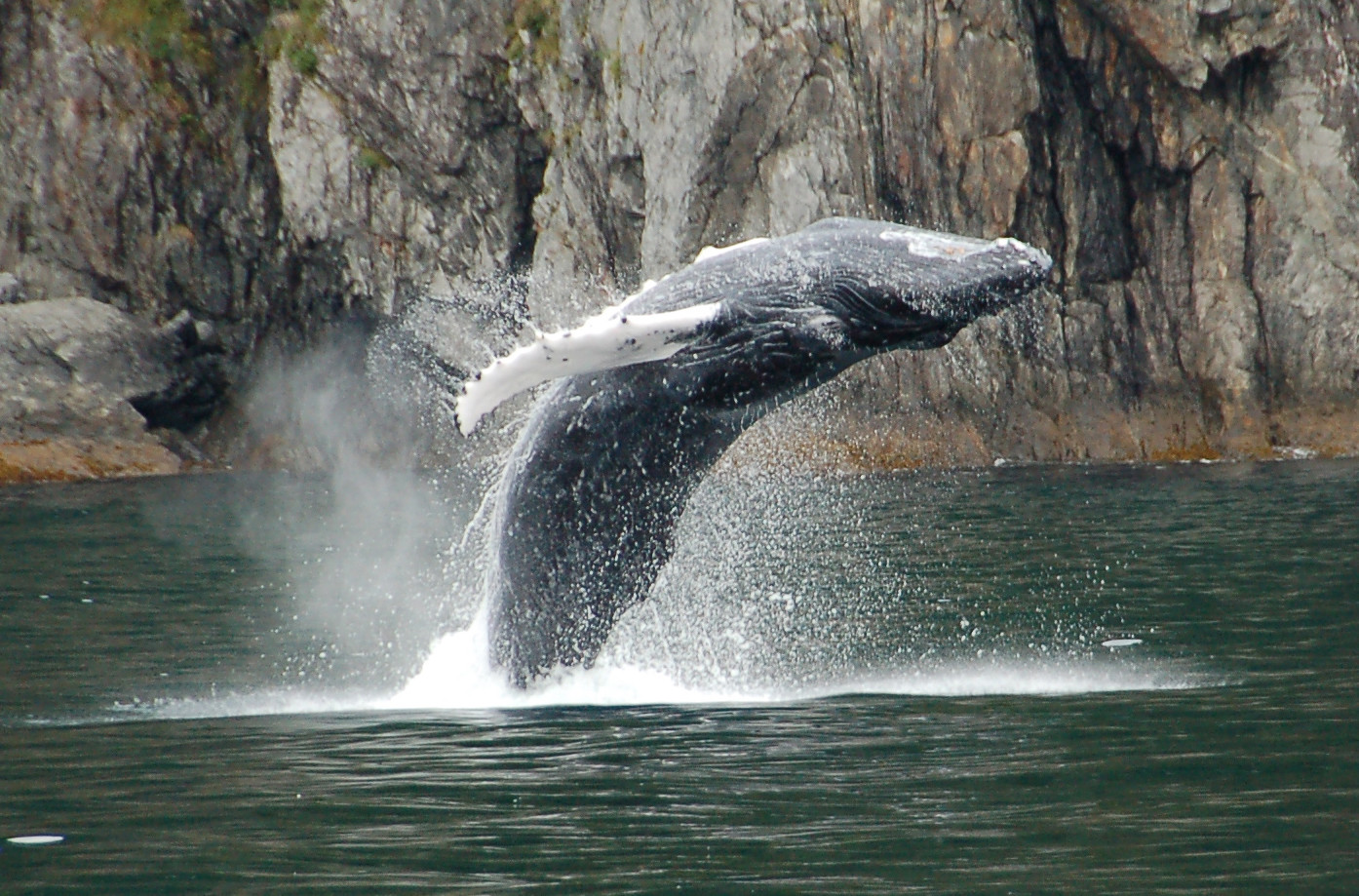News
Living whales’ services estimated by economists to be at $82 billion

FILE: Humpback whale breaching
This male humpback put on quite a show, repeatedly diving and breaching, perhaps trying to see how much of his body he could get out of water. It was certainly something to see. (Photo: jdegenhardt/Flickr, CC BY-NC-ND 2.0)
- Last year, a team of four economists published a report suggesting that living whales have a high market value for the services they provide in terms of ecotourism, carbon sequestration, and fishery enhancement. Each whale is worth about $2 million USD, they estimated.
- The economists, in collaboration with two conservation organizations, Instituto Baleia Jubarte and the Great Whale Conservancy, estimated that Brazil’s whale population is worth $82 billion.
- The team says it hopes the notion of valuing whales in Brazil, as well as in other coastal nations, can help protect whales from common fatalities like ship strikes, fishing gear entanglement, and deliberate hunting.
Each winter, southern right whales and humpback whales migrate to the waters off Brazil to feed on krill and phytoplankton, and to give birth to their young among the country’s rich coral reefs. These whales attract thousands of tourists, and their money, to Brazil.
A whale’s capacity to bring tourist dollars into Brazil, in addition to its ability to regulate the environment and enhance fisheries, is worth a lot, according to a group of economists. Now, they’ve put a figure on it: $82 billion.
This calculation comes from a model developed by four economists: Ralph Chami and Sena Oztosun of the International Monetary Fund (IMF); Connel Fullenkamp of Duke University’s Economics Center for Teaching; and Thomas Cosimano of the University of Notre Dame’s Mendoza College of Business. In December 2019, they published a report in IMF’s Finance & Development stating that living whales have a high monetary value for the tourism dollars they bring into a country, as well as their ability to sequester carbon, and to give a boost to local fisheries by contributing to the food web chain.
When it comes to regulating the environment, whales act as giant “pumps” that suck in carbon, mainly from the phytoplankton they eat, and release fecal plumes rich in nutrients that help more phytoplankton grow, which, in turn, produce more oxygen. Over its lifetime, a large whale can sequester about 33 tons of CO2 on average, while a tree only stores about 48 pounds (22 kilograms) of CO2 each year, according to the report. When a whale dies, its body will sink to the bottom of the ocean, storing away carbon for centuries, which plays a central role in mitigating climate change. Since carbon has a value in today’s market, the economists were able to put a price tag on a whale’s carbon service.
The economists estimated that each living whale is worth $2 million, and the combined population of the world’s whales is worth $1 trillion. However, Fullenkamp says these numbers are actually conservative.
“We’re not trying to put any kind of a price on the intrinsic value of a whale because that’s really hard to do, and that’s not because we don’t believe that whales have intrinsic value — we think they do,” Fullenkamp told Mongabay. “What we’re trying to do is impress people with the value of the market services alone, so that we can make an argument that says ‘Gosh, whales already do this much for us, and if you think whales have intrinsic value on top of that, then we have even more reason to protect them.’”
If international policymakers can see the financial value of living whales, they may be moved to take more action to protect whales from fatalities such as fishing net entanglement, cargo ship strikes, and deliberate hunting. However, Fullenkamp and his colleagues cautioned against simply viewing whales as financial commodities.
“Whales are not a human solution — these great creatures having inherent value of their own and the right to live — but this new mindset recognizes and values their integral place in a sustainable ocean and planet,” they say in their report.
For their first case study, the economists, in collaboration with two whale conservation groups, Projecto Baleia Jubarte and the Great Whale Conservancy, turned to Brazil. It’s estimated that 64,300 large whales, such as humpbacks and right whales, migrate through Brazilian waters each year, bringing about 228,000 tourists who spend more than $6 million to see whales, according to José Truda Palazzo Jr. of the Instituto Baleia Jubarte. These numbers, as well as an evaluation of whales’ carbon sequestration and fishery enhancement services, led the economists to conclude that Brazil’s whales are worth $82 billion.
Palazzo said he hopes that “whale ecosystem services” will eventually be integrated into “Brazilian long-term policies related to biodiversity conservation, ocean management and also climate change.” However, he noted that there needs to be a big shift in Brazil’s political motives for this to happen.
“Blue Carbon has not been high in our national agenda or even at the international agreements discussions, [but] we are confident that the immense value of ‘whale carbon’ that has been demonstrated can become part of mainstream climate negotiations from now on,” Palazzo told Mongabay in an email.
Michael Fishbach, executive director of the Great Whale Conservancy, who acted as an adviser to the IMF report, said the team hopes to set up an investment fund so developing nations have a financial incentive to protect whales migrating through their waters.
“[A country’s] tourism can improve, whales watching can improve, fisheries can improve, and the direct payment of money for protecting their whales will have a big impact on them,” Fishbach told Mongabay. “So that’s a really powerful example of where we think we have a very strong opportunity for success.”
It’s also important to show fishing and shipping industries the economic advantage of protecting whales, Fishbach said.
“We need to make it worth everybody’s while to stop killing whales to understand how they’re unintentionally being killed, and then the killing will stop,” Fishbach said. “We know how to stop it.”
While this project is still in its infancy, Fullenkamp told Mongabay there are a lot of “moving parts” to help bring the scheme to fruition.
“The valuation is really the first step in the process,” Fullenkamp said. “We’re thinking about how to do this investment type issue correctly so it’s sustainable and so it doesn’t turn out to be an investment that would disappoint people and can harm the cause of conservation.”
“We want to bring the whales back,” Fishbach said. “We believe that it is critically important for the oceans, for fisheries, for climate change, for carbon, for everything, that whales are allowed to increase in number.”
Citation:
Chami, R., Cosimano, T., Fullenkamp, C., & Oztosun, S. (2019). Nature’s solution to climate change. Finance & Development, 56(4). Retrieved from https://www.imf.org/external/pubs/ft/fandd/2019/12/natures-solution-to-climate-change-chami.htm
[This article was originally published by Mongabay. READ: Economists put a price tag on living whales in Brazil: $82 billion]





















